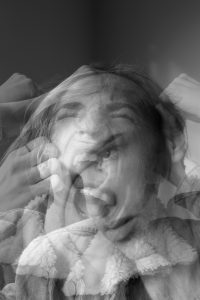A Guide to Recognizing Your Emotional Triggers
You’re having a perfectly fine day, and then suddenly, you’re not. A wave of sadness, anger, or anxiety washes over you, and you have no idea where it came from. It can feel like your emotions have a mind of their own, hijacking your mood without any warning. But these intense emotional reactions rarely come out of nowhere. They are often set off by something specific in your environment or in your mind. This “something” is called a trigger.
At Televero Health, we help our patients become emotional detectives. Learning to recognize your personal emotional triggers is a foundational skill in therapy. It’s the first step to understanding your emotional landscape and gaining more control over your reactions. When you know what your triggers are, you can anticipate them, prepare for them, and choose how you want to respond.
What Is an Emotional Trigger?
 An emotional trigger is any person, place, thing, or thought that sparks an immediate and intense emotional response. The response is often out of proportion to the immediate situation. This is because the trigger is tapping into a deeper, unresolved wound or a learned pattern from your past.
An emotional trigger is any person, place, thing, or thought that sparks an immediate and intense emotional response. The response is often out of proportion to the immediate situation. This is because the trigger is tapping into a deeper, unresolved wound or a learned pattern from your past.
For example, if your boss gives you some mild, constructive feedback, you might have an intense reaction of shame and fear, feeling like you are a complete failure. The feedback itself is the trigger, but the intense reaction is likely connected to past experiences of being harshly criticized or feeling like you were never good enough.
Triggers can be:
- External: These are things in the world around you. It could be a specific person, a location that reminds you of a bad memory, a certain time of year, or even a song, a smell, or a tone of voice.
- Internal: These are things that happen inside you. It could be a physical sensation (like a racing heart), a specific memory, or a critical thought about yourself.
How to Identify Your Triggers
Identifying your triggers requires self-awareness and curiosity. It’s about paying attention to your emotional shifts and then working backward to figure out what just happened. A great tool for this is a simple “trigger log,” which you can keep in a notebook or on your phone.
When you notice a strong, difficult emotional reaction, take a moment to pause and ask yourself a few questions:
- What am I feeling right now? Try to be specific. Is it anger? Sadness? Fear? Shame?
- How intense is this feeling on a scale of 1 to 10?
- What just happened right before I started to feel this way? This is the key question. Think about what was happening both externally and internally.
- Where were you?
- Who were you with?
- What were you doing?
- What were you thinking about?
By logging this information over time, you will start to see patterns emerge. You might notice that you always feel anxious after talking to a certain family member, or that you feel a wave of sadness every time you drive past your old neighborhood.
What to Do Once You’ve Identified a Trigger
Once you know what your triggers are, you have power. You are no longer a victim of your random emotional shifts. You can start to make conscious choices.
- You can avoid or limit exposure to the trigger. If you know that watching the news always makes you feel anxious and overwhelmed, you can make a conscious choice to limit your exposure to it. (Note: This is different from the unhealthy avoidance of a phobia; this is a strategic choice to protect your well-being.)
- You can prepare for the trigger. If you know you have to go into a situation that is triggering for you (like a difficult family gathering), you can prepare ahead of time. You can practice some deep-breathing exercises, plan a supportive phrase to say to yourself, or have an “exit strategy” if you start to feel overwhelmed.
- You can work to heal the underlying wound. This is the deeper work you do in therapy. By exploring why a certain situation is so triggering for you, you can begin to process the past experiences connected to it. Over time, this can reduce the emotional charge of the trigger, so it no longer has the same power over you.
Becoming aware of your triggers is like turning on the lights in a dark room. It allows you to see the landscape of your inner world more clearly, so you can navigate it with greater wisdom, skill, and self-compassion.
Key Takeaways
- An emotional trigger is anything that sparks an immediate, intense emotional reaction, often because it’s connected to a past experience.
- You can learn to identify your triggers by paying attention to your emotional shifts and asking yourself what just happened right before you started to feel that way.
- Keeping a simple log of your feelings and the situations that precede them can help you to see patterns.
- Once you know your triggers, you can make conscious choices to avoid them, prepare for them, or work in therapy to heal the underlying wound.
Ready to take the first step? We can help. Get started with Televero Health today.
